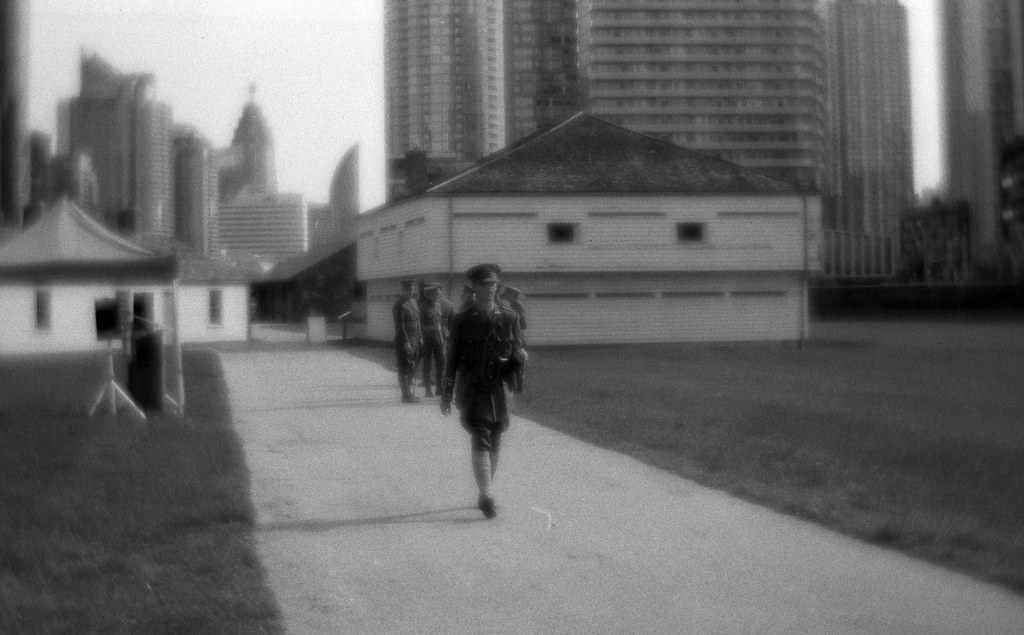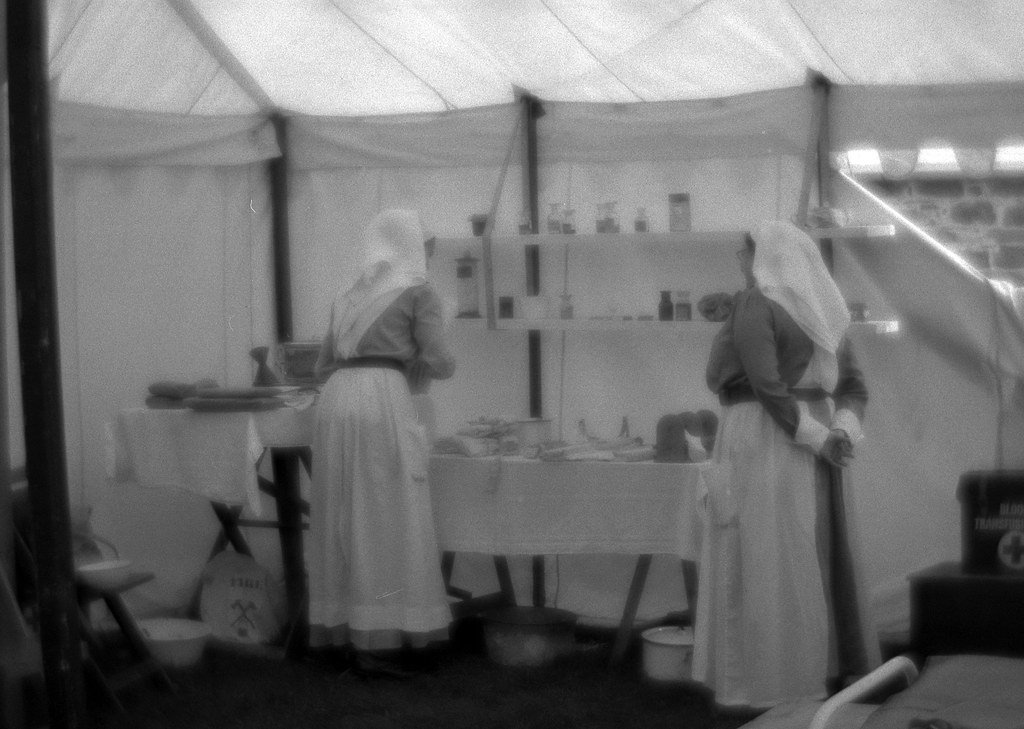When it comes to Historic Fort York in Toronto, most people will associate with the Anglo-American War of 1812, which isn’t wrong. The fort is home to the most extensive collection of original buildings from the era and is among the oldest buildings in the city. But this week, we’re moving ahead by a century into the fort’s role during Canada’s involvement in the First World War.

Nikon FM – Lomography Daguerreotype Achromat 1:2.9/64mm – Fomapan 200 @ ASA-50 – Kodak D-23 (Stock) 5:45 @ 20C
When Canada found itself at war in 1914, it had only served once overseas during the Second Boer War. Canada’s involvement in that colonial conflict resulted in a great deal of reform within the Militia. The Militia had three branches, the Permanent Active Militia or Permanent Force, the Active Militia, and a Sedentary Militia (which played no fundamental role). The Permanent Force offered up a series of troops used to man the defensive works across Canada and the Active Militia could be called up to service if needed. In 1914 the Canadian Government formed the Canadian Expeditionary Force (CEF) to organize troops to send to the Western Front. The first troops arrived in England in the Fall of 1914 and were deployed to the front in 1915. By Fall 1915, the second division of Canadian troops came, joining the 1st and the Canadian Corps, which eventually grew to four divisions by August 1916. In addition to the Canadian Corps, including the Canadian Army Medical Corps, Service Corps, Machine Gun Corps, Cavalary, drivers, guides, and more. In combat, Canadians fought in seventeen major engagements and faced one of the Germans’ first uses of poison gas against allied troops. And fought until the very end of the war earning a fearsome reputation in combat. By the end of the war, most of the CEF was disbanded, but a 1918 study allowed many current regiments in the Canadian Army to perpetuate the battle honours earned during the war.

Nikon FM – Lomography Daguerreotype Achromat 1:2.9/64mm – Fomapan 200 @ ASA-50 – Kodak D-23 (Stock) 5:45 @ 20C
Nikon FM – Lomography Daguerreotype Achromat 1:2.9/64mm – Fomapan 200 @ ASA-50 – Kodak D-23 (Stock) 5:45 @ 20C
Since I had already dedicated an entire week to the 11th Swiss Rifles, I made a point to include mainly reenactors who represented Canadian units, save for one shot of a Swiss Rifleman due to the awesome pipe. These included folks portraying the 3rd Battalion CEF elements, Princess Patricia’s Canadian Light Infantry, and Royal Canadian Regiment. But also made a point to include the famous Lance Corporal Julius, the mascot of the 3rd Casualty Clearing Station and members of the nurses that portray those who served in the Canadian Army Medical Corps. It also proved difficult because I could not always get full resolution on the detailed elements of the uniforms of the Canadian reenactors. The trouble is that by this point, the colourful and unique elements of the uniforms of the Napoleonic era had been lost in the dry, dusty battlefields of South Africa. But I think I caught almost everyone. If you want to see all the photos I captured during the event; you can check out the full album over on Flickr.

Nikon FM – Lomography Daguerreotype Achromat 1:2.9/64mm – Fomapan 200 @ ASA-50 – Kodak D-23 (Stock) 5:45 @ 20C
Nikon FM – Lomography Daguerreotype Achromat 1:2.9/64mm – Fomapan 200 @ ASA-50 – Kodak D-23 (Stock) 5:45 @ 20C
Given the era of the reenactors, I had to tone down the perfection delivered by ‘modern’ Nikkor glass. I returned to a lens I have only used once before in the project, the Lomography Daguerreotype Achromat 64mm/2.9. An 1839 lens formula offered up that old-school look that many cameras of the age carried. The biggest problem is that 35mm film during the First World War was limited to motion picture films, with most still cameras using medium format. Because I planned to use the optical qualities of the lens when shot at f/2.9 and given the sunny conditions during the day, I ended up giving the film a two-stop overexposure, shooting the Fomapan 200 at ASA-50, at least for a majority of the roll, the first handful of frames I shot at box speed (ASA-200). I went with Kodak D-23 for the developer, a classic slower and older version of Kodak D-76 for the developer, and pulled the film in development to compensate for that much overexposure. I could have also used Rodinal for the developer as I know it was around during the First World War. It surprised me that even the shots I rated the film at ASA-200 turned out to be a bit denser but still viable,e I chose not to scan them to keep things consistent.

Nikon FM – Lomography Daguerreotype Achromat 1:2.9/64mm – Fomapan 200 @ ASA-50 – Kodak D-23 (Stock) 5:45 @ 20C
Nikon FM – Lomography Daguerreotype Achromat 1:2.9/64mm – Fomapan 200 @ ASA-50 – Kodak D-23 (Stock) 5:45 @ 20C
We’re sticking to the historical theme but moving further back in time to the original capital city of the United Provinces of Canada, the city of Kingston.